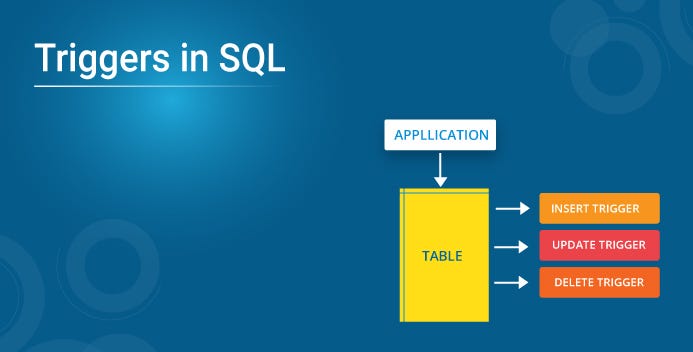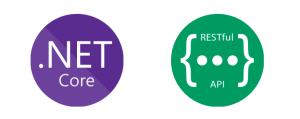Table of Contents
- Introduction to Triggers
- Types of Triggers in SQL Server
- DML Triggers
- DDL Triggers
- Logon Triggers
- Advantages of Triggers
- Limitations of Triggers
- Best Practices for Using Triggers
- Conclusion
Introduction to Triggers
A trigger in SQL Server is a special kind of stored procedure that automatically executes or fires when specific actions occur in a database. These actions can be INSERT, UPDATE, or DELETE operations on a table or view. Triggers are often used to enforce business rules, maintain data integrity, and audit changes in the database.
Types of Triggers in SQL Server
SQL Server supports three main types of triggers:
- DML Triggers: Fired in response to Data Manipulation Language (DML) events like
INSERT,UPDATE, andDELETE. - DDL Triggers: Fired in response to schema-altering events like
CREATE,ALTER, andDROPoperations. - Logon Triggers: Fired in response to logon events, useful for tracking or limiting logins to a SQL Server instance.
DML Triggers
DML triggers are defined on tables and views and execute automatically when an INSERT, UPDATE, or DELETE statement is executed on the associated table or view.
AFTER Triggers
AFTER triggers are executed after the associated SQL operation is completed. These are most commonly used to validate or modify data after changes are made.
Example: AFTER INSERT Trigger
CREATE TRIGGER trg_AfterInsertProduct
ON Products
AFTER INSERT
AS
BEGIN
DECLARE @ItemName NVARCHAR(50), @StockQty INT;
-- Get inserted values
SELECT @ItemName = ItemName, @StockQty = StockQty FROM inserted;
-- Logic to enforce business rules or other actions
IF @StockQty < 0
BEGIN
PRINT 'Warning: Stock quantity cannot be negative.';
ROLLBACK TRANSACTION; -- Cancels the INSERT operation
END
ELSE
BEGIN
PRINT 'Product inserted successfully.';
END
END;
Example: AFTER UPDATE Trigger
CREATE TRIGGER trg_AfterUpdateStock
ON Products
AFTER UPDATE
AS
BEGIN
DECLARE @ProductID INT, @OldStock INT, @NewStock INT;
-- Get the updated values
SELECT @ProductID = ProductID, @OldStock = d.StockQty, @NewStock = i.StockQty
FROM deleted d
INNER JOIN inserted i ON d.ProductID = i.ProductID;
-- Log changes if stock quantity was updated
IF @OldStock <> @NewStock
BEGIN
INSERT INTO StockLog (ProductID, OldStock, NewStock, UpdateDate)
VALUES (@ProductID, @OldStock, @NewStock, GETDATE());
END;
END;
Example: AFTER DELETE Trigger
CREATE TRIGGER trg_AfterDeleteProducts
ON Products
AFTER DELETE
AS
BEGIN
-- Log deleted product info
INSERT INTO DeletedProductsLog (ProductID, ItemName, DeleteDate)
SELECT ProductID, ItemName, GETDATE() FROM deleted;
END;
INSTEAD OF Triggers
INSTEAD OF triggers are fired in place of the actual INSERT, UPDATE, or DELETE statements. These are useful when you want to override the default behavior or perform complex validation before changes are applied.
Example: INSTEAD OF UPDATE Trigger
CREATE TRIGGER trg_InsteadOfUpdate
ON Employees
INSTEAD OF UPDATE
AS
BEGIN
-- Enforce that Salary cannot be decreased
IF EXISTS (SELECT * FROM inserted i, deleted d WHERE i.Salary < d.Salary)
BEGIN
PRINT 'Error: Salary cannot be decreased.';
ROLLBACK TRANSACTION;
END
ELSE
BEGIN
-- Perform the update if the salary is not decreased
UPDATE Employees
SET Salary = i.Salary, Department = i.Department
FROM inserted i
WHERE Employees.EmployeeID = i.EmployeeID;
END
END;
DDL Triggers
DDL triggers fire in response to schema changes, such as CREATE, ALTER, or DROP. These triggers are often used for auditing database schema modifications or preventing unwanted changes.
Example: DDL Trigger
CREATE TRIGGER trg_PreventTableDrop
ON DATABASE
FOR DROP_TABLE
AS
BEGIN
PRINT 'Table dropping is not allowed.';
ROLLBACK TRANSACTION;
END;
Logon Triggers
Logon triggers fire in response to LOGON events. They are useful for controlling access to SQL Server, logging login attempts, or limiting the number of concurrent connections.
Example: Logon Trigger
CREATE TRIGGER trg_LimitLogon
ON ALL SERVER
FOR LOGON
AS
BEGIN
-- Limit logins during a specific time window
IF DATEPART(HOUR, GETDATE()) BETWEEN 9 AND 18
BEGIN
PRINT 'Logons are restricted during business hours.';
ROLLBACK;
END
END;
Advantages of Triggers
- Automation: Triggers automate actions such as auditing, validation, and data modification without requiring explicit invocation.
- Data Integrity: They help maintain data integrity by enforcing business rules at the database level.
- Audit Trail: Triggers can log changes to sensitive tables, creating a robust audit trail.
- Centralized Logic: They centralize complex business logic in one place, reducing the need for code duplication across multiple applications.
Limitations of Triggers
- Performance Overhead: Since triggers fire automatically, they can introduce performance overhead, especially if they perform complex operations.
- Debugging Difficulty: Triggers are harder to debug compared to stored procedures or application code because they run behind the scenes.
- Hidden Logic: The logic within triggers can be harder to manage and maintain, especially in large databases.
Best Practices for Using Triggers
- Keep It Simple: Triggers should be as lightweight as possible to minimize performance impact.
- Use Proper Error Handling: Always handle errors within the trigger to avoid failing transactions.
- Test Carefully: Triggers can have far-reaching consequences, so test thoroughly before deploying.
- Document Triggers: Since triggers are less visible than other forms of logic, documentation is essential.
- Use Auditing for Transparency: When using triggers for data auditing, ensure logs are clear and complete.
Conclusion
SQL Server triggers are a powerful feature for automating database actions, enforcing business rules, and maintaining data integrity. However, they should be used with care to avoid performance bottlenecks and ensure that database logic remains transparent and maintainable. By understanding the different types of triggers and following best practices, developers can harness their potential while mitigating any downsides.



